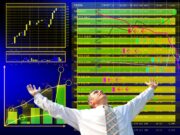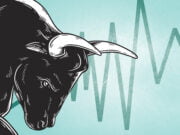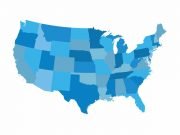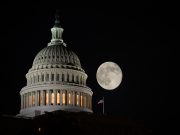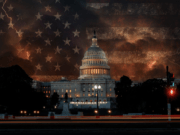Investors across all asset classes remain jittery about Election Day. Options markets reflect the fear of increased volatility in the days and weeks after Nov. 3 in the event of an unclear or contested election outcome.
Democratic challenger Joe Biden still leads in national opinion polls by 7.9% versus a peak of 10.2 percentage points on Oct. 12. However, according to polling aggregator Real Clear Politics, Trump has increased his standing in battleground states Georgia and Michigan.
Signs of a close election tend to lead to more volatility in the run-up to Election Day, said King Lip, chief strategist at baker Avenue Asset Management in San Francisco. “The polls appear to be narrowing… and what that causes is just more uncertainty,” he said.
Overall, the S&P 500 is only up about 1% for the year to date which is about 9% below its record high posted in early September. What could be in store for the final week before the ballots are in? A look back at the market’s performance leading up to past elections may provide some insight amidst the current conditions.
The S&P 500 has risen an average of 2.5% in the final week before a presidential election running back to 1944. Moreover, the index is up 17 out of 19 times, or 89%.
The biggest rise by far came in the midst of the financial crisis, with the S&P roaring back 18.5% in a bear market rally ahead of Barack Obama’s victory over John McCain. The market subsequently slumped back to new lows, bottoming four months later before beginning what would become the longest bull market in history.
The two declines came in 1988 (-1.4%), ahead of George H.W. Bush’s victory over Democratic nominee Michael Dukakis, and 1968 (-0.8%) ahead of Richard Nixon’s victory over Democratic nominee Hubert Humphrey.
Aside from marking the beginning of the week-long countdown to the election, there is another reason that today holds significance. The S&P 500 has turned in an average gain of 0.54% on October 28th, historically the best day for the stock market over the past 70 years. The second best day is the day after Christmas. Then there’s October 19th the worst day of the year, thanks to the crash of 1987.
Sure, it’s interesting to note the patterns which occur, but it probably shouldn’t impact your choices. The problem with investing based on such data patterns is that it’s not a sound way to go about making investment decisions. It seems exciting, and it fulfills a belief that many people have that there’s a way to “beat the market.” But it’s no guarantee. There are far too many other forces at work that affect market conditions.
If history does repeat, it’ll likely depend, at least in part, on what we see on the earnings front, where reports from more than a third of the S&P 500 are on tap, including tech notables such as Facebook (FB), Amazon (AMZN), Apple (APPL), Microsoft (MSFT) and Alphabet (GOOG).


